Monica Ocegueda
How has growing up in California’s Central Valley shaped your identity and your artistic voice?
Growing up in the Central Valley definitely has had a huge impact on who I am today, both as a person and an artist. Coming from a small town, I was aware from a young age that I had a different set of experiences and customs compared to other people. The town was small, rural, and deeply tied to agriculture, and while there wasn’t a lot of access to traditional art spaces or creative outlets, that environment still shaped my perspective in a way that I now value. There’s a lot of pride that comes from being from a place like that, a place where community, family, and hard work are everything.
Now, living in a city like San Francisco, I’ve gained a new perspective, but at the same time, I’ve grown even more proud of where I come from. My identity as a Mexican American, especially being a daughter of immigrant parents, has become a significant force in my work. It’s that duality I live with: being born here, but carrying my family’s history and struggles, their sacrifices, their dreams. The sense of belonging and shared experiences in the Central Valley is something not often reflected in mainstream or fine art, especially when it comes to Mexican Americans. Our stories tend to be overlooked, misrepresented, or reduced to stereotypes. I want to tell those stories—our stories, from our own perspective.
Art has become a way for me to carve out a space for my community:those who identify with the immigrant experience, who know what it’s like to navigate between two cultures, two languages, and two worlds. Growing up, we didn’t see our Mexican culture celebrated in schools, and our language (Spanish) wasn’t encouraged; in fact, it felt like we were being erased. For a long time, there was this unspoken shame attached to being Mexican. But through my work, I want to challenge that, to reclaim our narratives, especially for the next generation. It’s important to me that young Chicanos and Chicanas feel proud of who they are, that they don’t forget our roots, our culture, our history—even if the world around them tries to forget or dismiss it.
Being from the Central Valley keeps me grounded, though. When I feel disconnected or overwhelmed by the institutional spaces I occupy now, going back home to my family, reconnecting with the land, and remembering the hardworking people who labor in the fields reminds me of why I do this work. It’s for them, for the community I came from, and for the generations to come. That’s always been my motivation—creating something that speaks to and for my community.
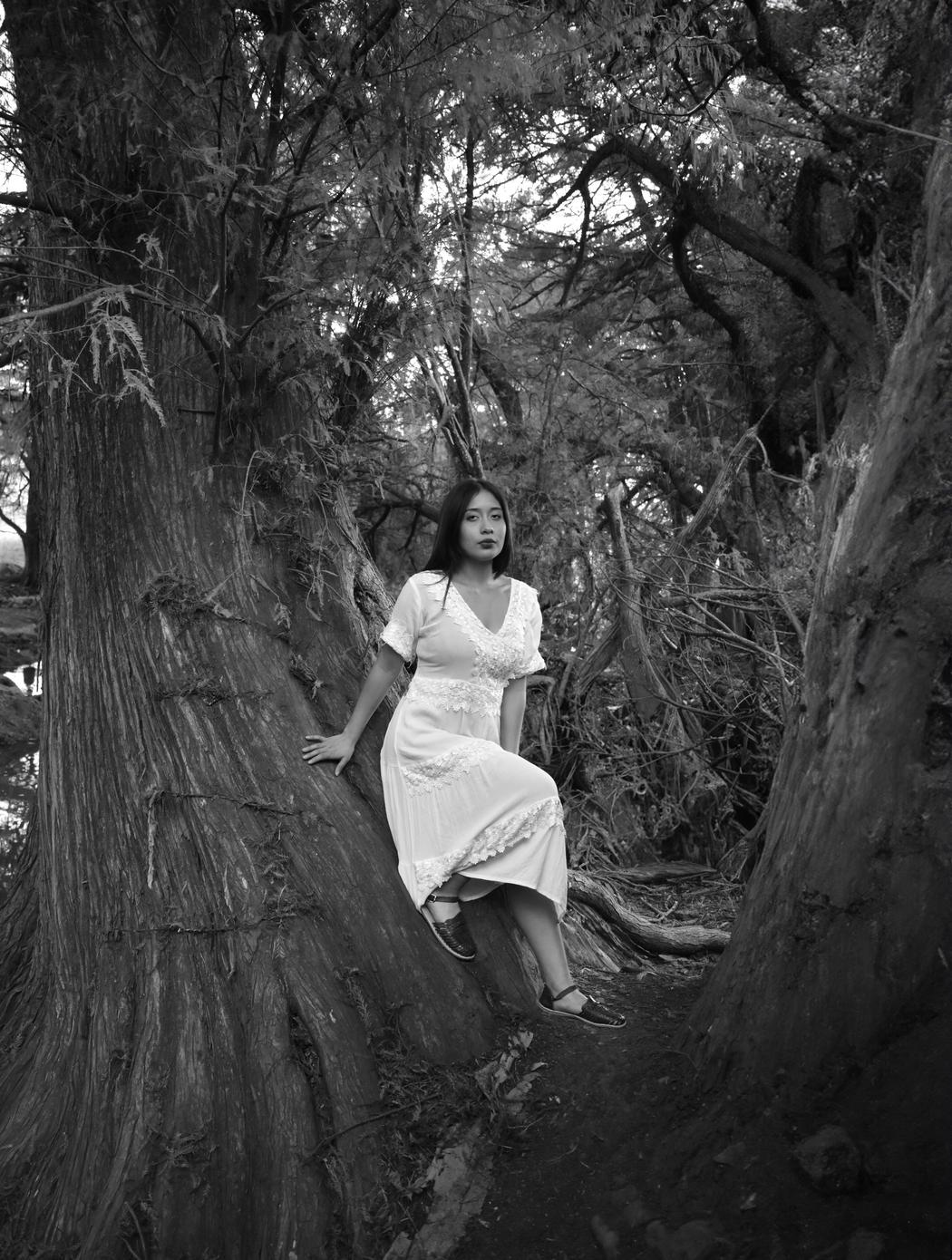 Monica Ocegueda | Árbol Que Nace Torcido, Jamás Su Tronco Endereza | 2024
Monica Ocegueda | Árbol Que Nace Torcido, Jamás Su Tronco Endereza | 2024
In what ways does your Mexican heritage influence the stories you choose to tell through your work?
My Mexican heritage influences the stories I tell in my work in such a deep and personal way. A lot of it comes from generational trauma, especially from the women in my family. I come from a long line of strong women who have survived emotional and physical abuse, who’ve lived through machismo, and who weren’t given the space or freedom to speak up. That history lives in me, and it shows up in my work. I’ve also experienced emotional abuse in my own life, and there came a moment when I decided that this cycle ends with me. I don’t want my nieces, students, or any young girl, to grow up thinking that they have to diminish themselves. I want them to feel empowered to speak up, to be unafraid, and to take up space in places where they always dreamed to be.
So much of my inspiration comes from the resilience of the women in my family. They went through so much, but they carried themselves with strength and grace. Many of them lived during times where they couldn’t leave abusive relationships, where they were taught to stay quiet, and to endure challenges and battles they weren’t meant to fight. With my current project, a black-and-white photography series called Dichos, I’m trying to honor those women while also challenging the ways in which they had been silenced. The project looks at traditional Mexican dichos, these sayings we all grew up hearing, that were meant to teach us lessons, but often carried really heavy, machista ideas, especially toward women.
With Dichos, I’m interested in what it means to reincarnate, to imagine what our ancestors could have been if they were allowed to speak their truth. It’s about reclaiming those phrases, turning them on their head, and showing how Chicana and Latina women today are breaking these generational cycles. This project is a tribute to those who came before us, and a statement of who we are becoming.
Storytelling is everything in my work. It’s not just photography, it’s about the deeper layers of identity: being a daughter of immigrants, feeling like we don’t fully belong, navigating relationships, womanhood, cultural traditions, and healing. These are the stories that don’t often get told in mainstream media or fine art. Mexican American women are so often misrepresented or completely silenced in those spaces.
I’ve always craved that sense of sisterhood, of being able to sit with another woman and share what we’re going through, knowing that she gets it because she’s lived it too. That’s the energy I want my work to carry. My art is about creating that space, one where we can be seen, heard, connect through shared experience, and heal our ancestral traumas.
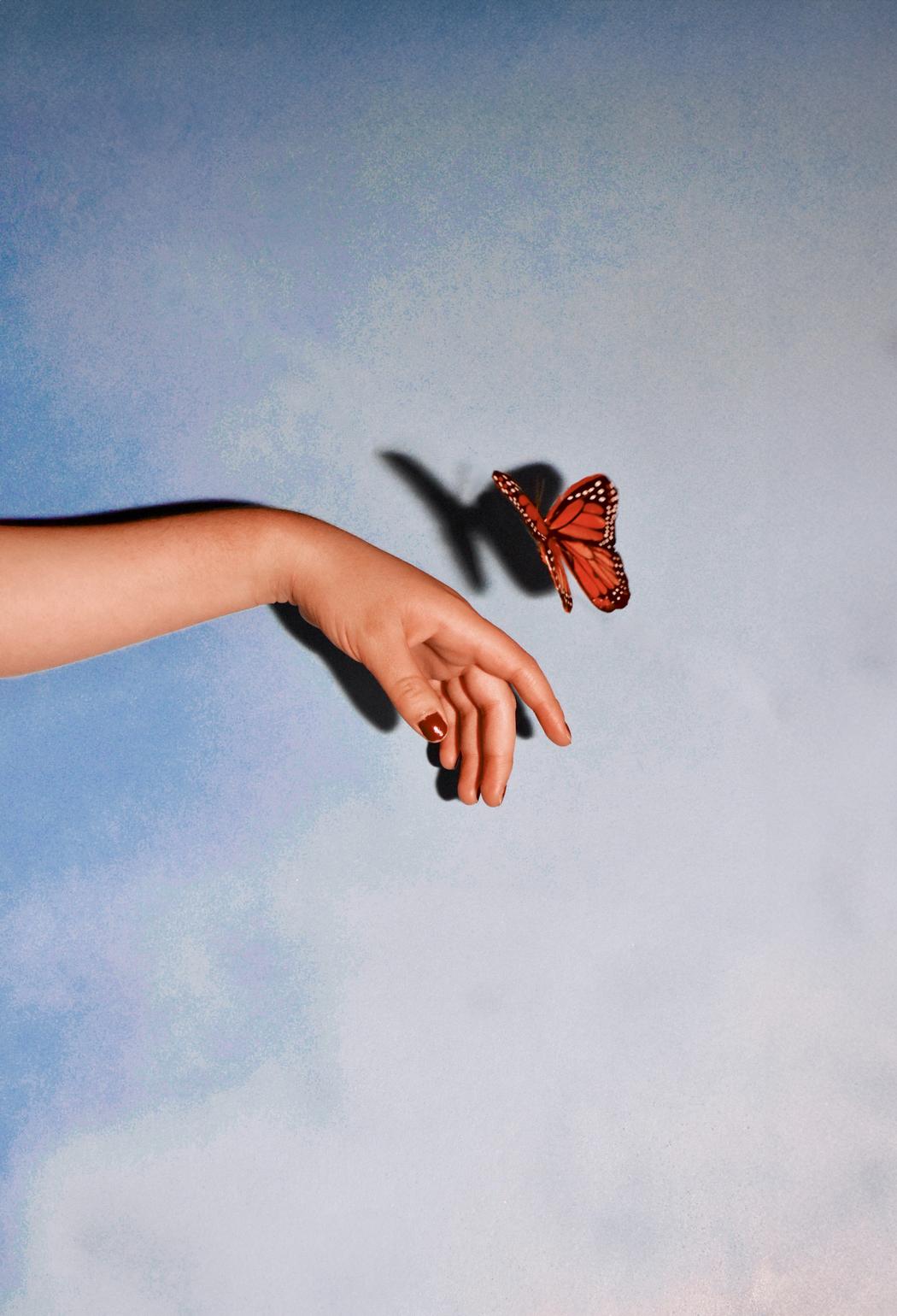 Monica Ocegueda | Hope | 2022
Monica Ocegueda | Hope | 2022
Your work blends photography, installation, and mixed media. How do you decide which medium best suits each narrative?
My process for choosing which medium really depends on the narrative I’m working with and honestly the time I have. Sometimes the story calls for photography, other times it’s installation, and often it’s a mix of both. I don’t like to force a medium onto the idea, I just go with my intuition.
Photography actually takes the longest, especially when I’m working on projects like Dichos or Trenzas, which center women. These shoots are really intentional and collaborative, and because I’m based in San Francisco, but my community is in the Central Valley, I’m constantly going back and forth on weekends to make it happen. My friends have full lives too, so I work around their schedules, and I honestly prefer it that way. It gives us time to really talk through the project, what it means, and why they want to be part of it. It’s not just me taking a photo, it’s a collaboration rooted in trust and shared experience. I don’t want to take full control. It’s more meaningful when we create it together, and that process builds community, sisterhood, and deeper connections.
Installation work, on the other hand, usually comes together more quickly. I often use found objects—things like bandanas, dirt, clothing, or even feminine products and I build compositions that speak to different ideas. For example, I’ve spray-painted feminine hygiene products pink to comment on beauty standards and expectations. I’ve created an art installation with soil from the Central Valley and created a field with a bandana that says “Farmworkers Feed You” to honor farmworkers. That type of work is more direct in process, but it’s still layered in meaning.
So for me, the choice of medium really comes down to what the story needs and how much time and space I have to tell it. Each artwork brings something different, and I like being able to move fluidly between them depending on what the narrative calls for.
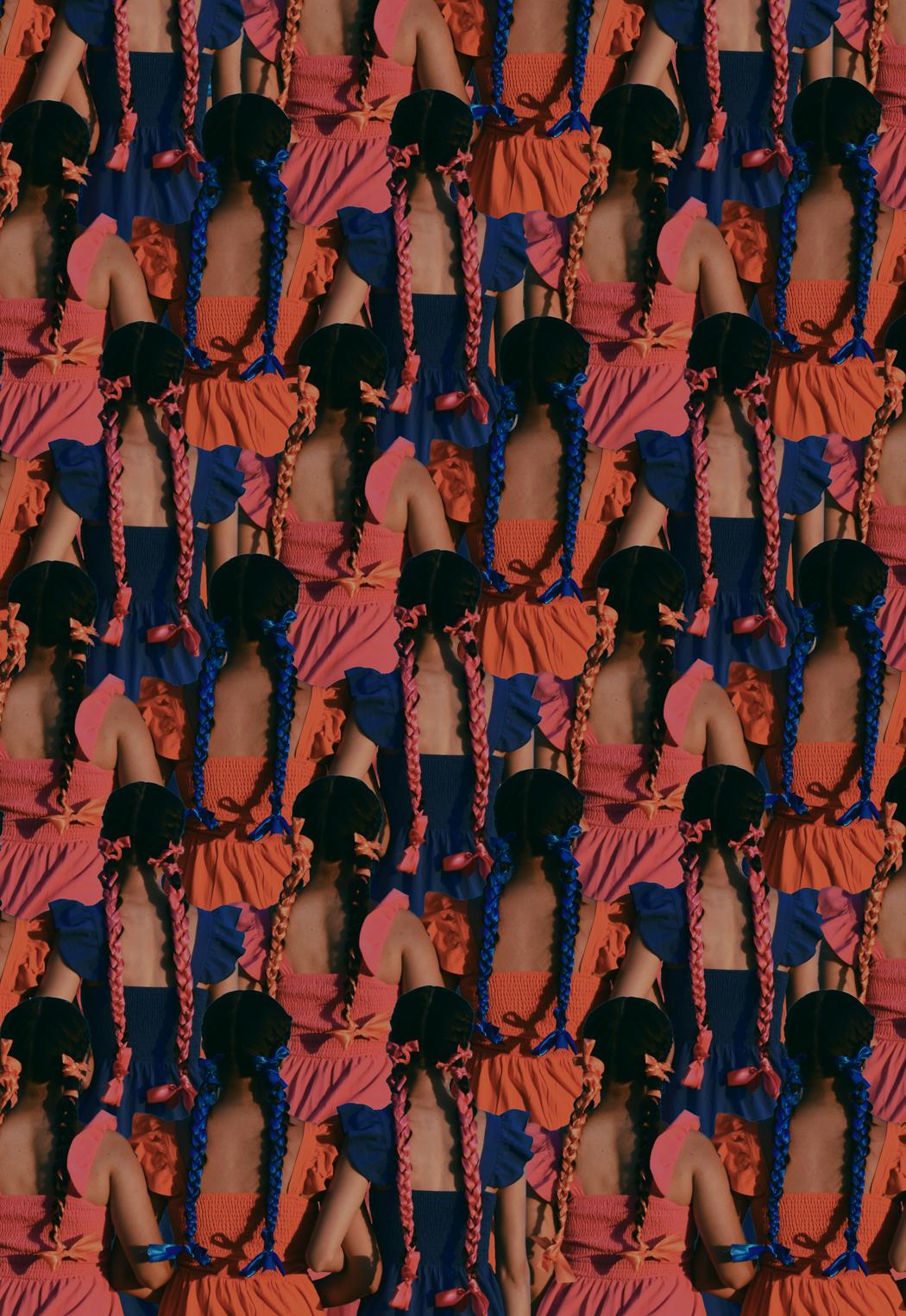 Monica Ocegueda | Taking Up Space | 2024
Monica Ocegueda | Taking Up Space | 2024
You refer to art as “documentation” and “resistance.” Could you expand on that idea—what are you resisting, and what are you preserving?
When I talk about art as documentation, I’m talking about capturing the moment, what’s happening right now. Whether it’s a feeling, a person, or an issue in my community, I see my work as a way to hold onto that moment, to say: this mattered. My art is shaped by the lives of women around me and the experiences of Mexican Americans, especially in the Central Valley. It’s a form of archiving, not just history, but emotion, identity, and resilience.
Documentation, for me, is about visibility. Growing up, and being an undergraduate college student, I didn’t see people like me represented in art or in art spaces, or even in the broader narrative of what was considered “important or successful.” It always felt like I was left out or made to feel like I didn’t belong or that my voice did not matter. I actually have never imagined I’d be in grad school right now, let alone getting an MFA in Art, because that kind of path wasn’t shown to me. I am the daughter of immigrants, I am the first woman in my family to go to college, but I was also just expected to get my degree and then stop there. However, I wanted to get a higher education and go to grad school, become an art professor, and give back to my family and my community. So now, through my work, I’m preserving our presence—saying we exist, we’ve always existed, and we deserve to be seen. And I want future generations to know that too—that their stories matter, and that they can pursue whatever they dream of with passion and heart.
When I talk about resistance in my artwork, I mean that I’m resisting all the ways society tries to make us shrink ourselves. I want my community to resist assimilation, to resist being erased, to resist the pressure to be anything other than who they are. Especially for women, there’s this constant messaging to stay quiet, to stay small, to make yourself more approachable to men in order to be liked. My work pushes back against that. It’s about resisting silence, resisting invisibility, resisting oppression, resisting the generational traumas and reclaiming pride and healing in our Mexican roots, our people, and our voices. It’s about reminding ourselves, and each other, that we don’t need permission to take up space. We already belong.
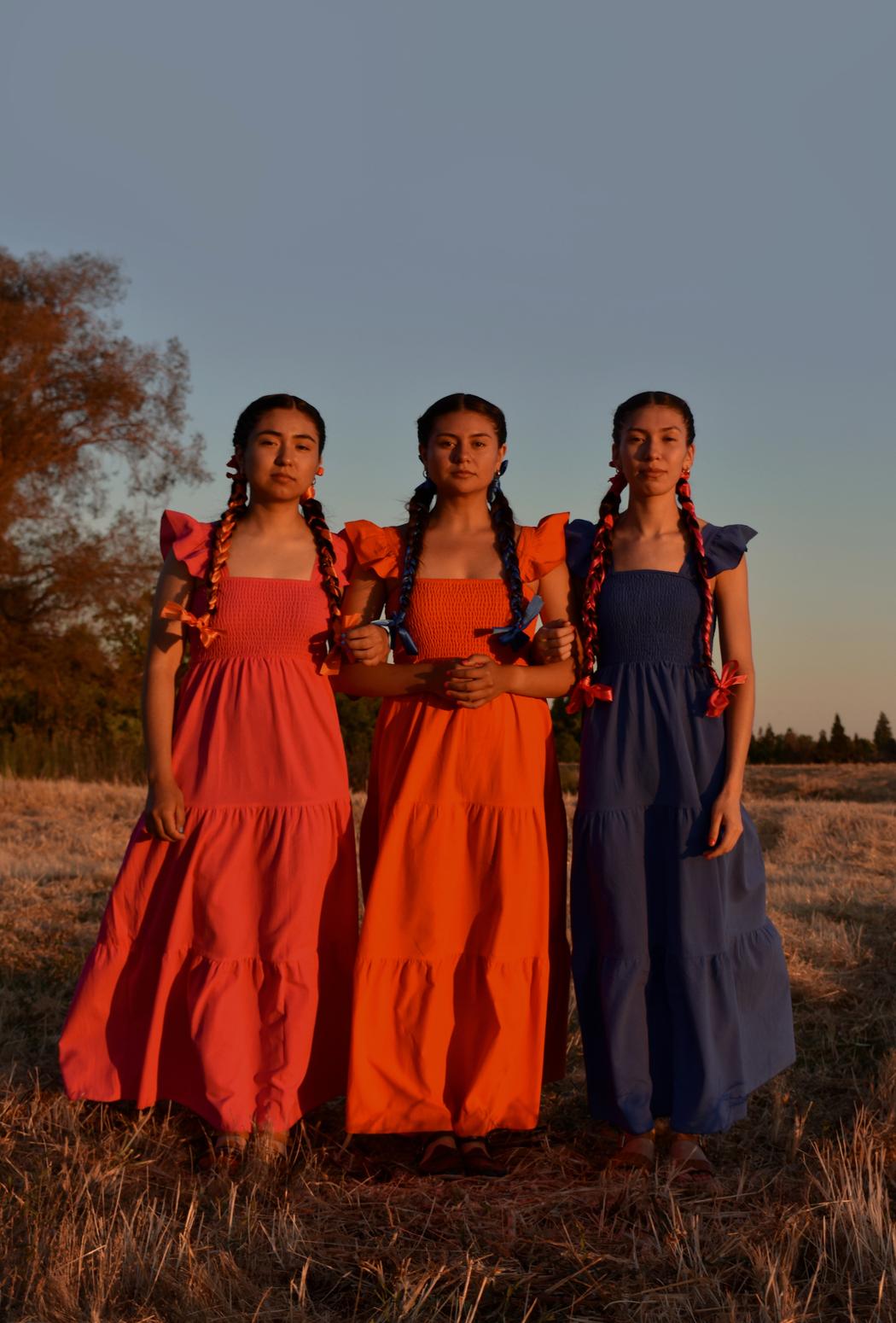 Monica Ocegueda | Unidas | 2024
Monica Ocegueda | Unidas | 2024
How do you incorporate ancestral knowledge and family memory into your visual storytelling?
Ancestral knowledge, for me, comes through the stories that have been passed down over the years and through family photographs. My mom has so many photo albums, and I remember flipping through them as a young girl, completely amazed. Seeing the faces of my ancestors, some who had already passed has helped me connect the stories I was told to real people. It made those stories feel alive. I think that is why storytelling has always been so important to me. It is not just about the narrative, it is also about the characters. The people in those photos are there for a reason. They had presence, and even if I never met them, I felt like I knew them through those images. Kind of like how a person can relate to or be drawn to a character from their favorite movie.
I have experienced loss in different ways, not only through death but also through distance. There are people who I loved deeply who are still living, but for different reasons we have grown apart. So, I find myself holding onto photographs because they are a way of keeping those connections close, even if they exist now only in memory or in an image. Photography helps me preserve those moments. It is proof that those relationships were real, that those people were here, that love at some point existed and was real. When I make art, I think about how powerful it is to capture something that might otherwise fade. The way we pass down stories, the way we remember our loved ones, the way we hold space for people even after they are gone—those are all forms of ancestral knowledge. And through visual storytelling, I try to honor that, not just for myself but for my community as well.
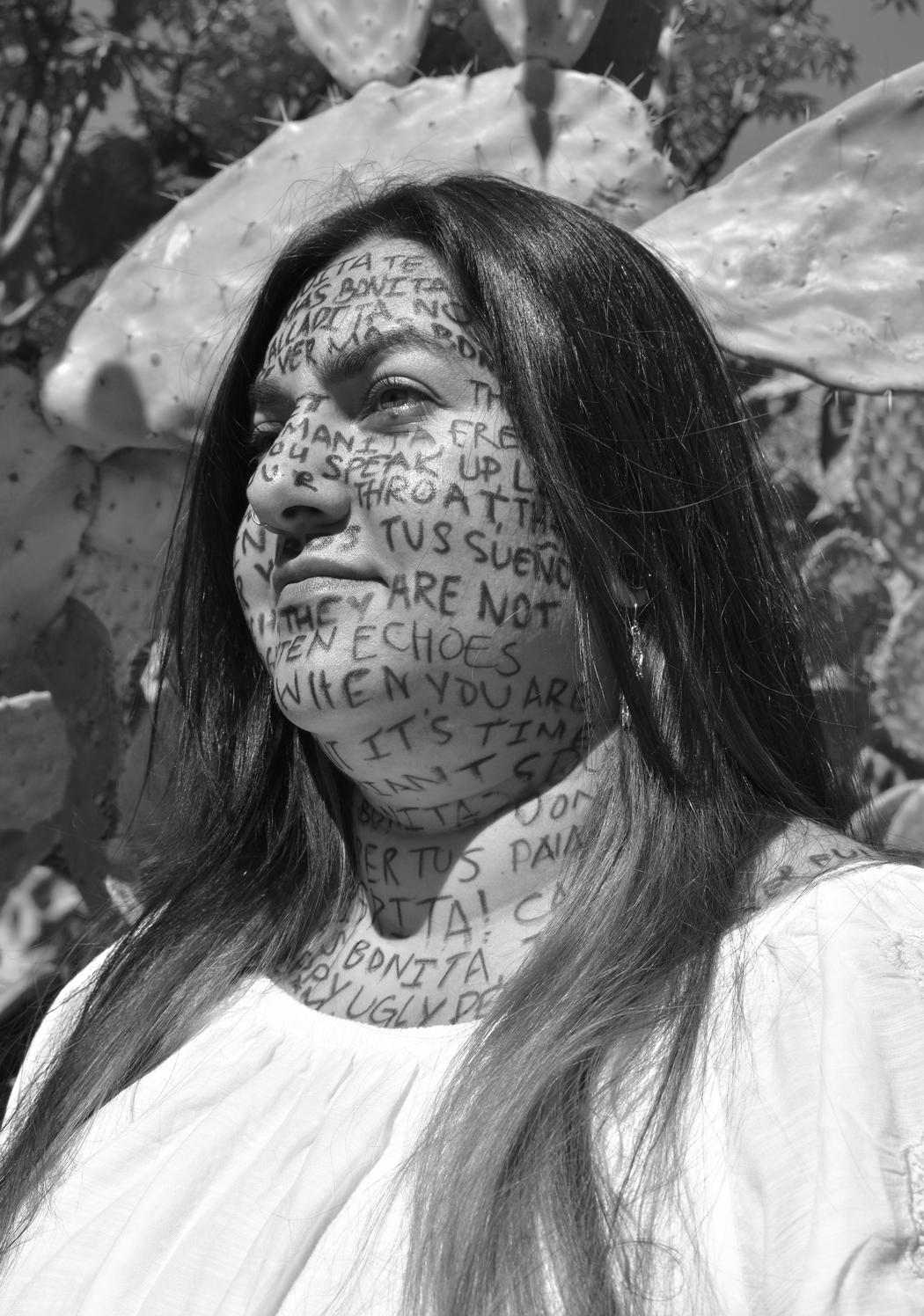 Monica Ocegueda | Calladita Te Ves MáS Bonita | 2024
Monica Ocegueda | Calladita Te Ves MáS Bonita | 2024
Many of your images focus on women, sisterhood, and intergenerational connection. What role does feminism play in your artistic practice?
I don’t always know if what I do fits the traditional definition of feminism, but what I do know is that I deeply believe every woman deserves the space to be exactly who she is. Growing up, my experiences with other girls and women were not always easy. I was bullied in and out of school, and my relationship with one of my sisters was difficult too. Those experiences made me long for real connection, for a sense of sisterhood that felt safe and genuine. Even through that, I always believed it was possible. I just wanted to be around women who lifted each other up instead of tearing each other down, women who were not threatened by one another but instead inspired by each other. And I am really grateful because I have that now. I have found a community of women who support me, who believe in my work, and who show up for me not just as collaborators, but as real friends.
When my friends are involved in my artwork, I want them to feel empowered and at ease, free of judgment, and fully themselves. I want the process to feel like something we are creating together, a space of trust and connection. Because I know what it feels like to grow up without that kind of support, and I also know how healing it is when you finally find it.
A big part of my artistic practice is creating that space through my photographs. A space where women are seen, where they are heard, and where they feel safe to just be. If I succeed in something, I want my friends to succeed too. I really believe there is enough space for all of us, and that we are stronger when we root for each other rather than compete. To me, that is what feminism means. It is about care, community, and showing up for one another. And honestly, I could not do the work I do without my friends, they are a huge part of the reason why these projects even come to life.
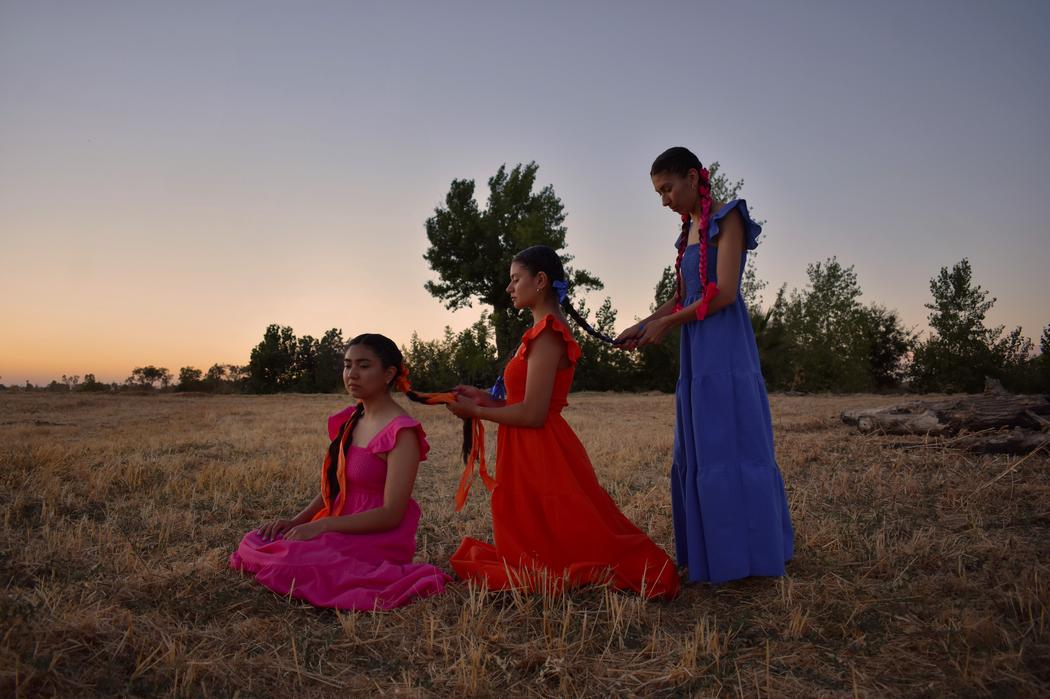 Monica Ocegueda | Trenzas | 2024
Monica Ocegueda | Trenzas | 2024
Could you speak about the role of community—especially the Chicana and farmworker communities—in your creative work?
Community plays such an important role in my creative work, especially the Chicana and farmworker communities that I come from and still feel deeply connected to. I think being raised in the Central Valley shaped the way I see and value people. Growing up around immigrant families, around hardworking people in the fields, you see sacrifice, you see resilience, and you see love expressed in quiet but powerful ways. That stays with you.
When I create, I think about them constantly. I think about my parents, my friends, my ancestors, and the people who never got a platform to tell their stories. A lot of times, these communities are either invisible or misrepresented in mainstream spaces. So for me, making art about and for them is a way of saying, “We are here. We matter. Our lives are full of beauty and meaning.”
Even though I live in the city now, I go back home as often as I can. My projects often involve my friends and people from my hometown. I work with women who are part of that same community, and it is important to me that they see themselves in the work, not as an outsider looking in, but as someone whose story is centered.
My artwork is about building trust, sharing space, and honoring the everyday experiences of people who are so often overlooked. Whether it is through photography, installation, or mixed media, I always want my work to feel grounded in the real lives of the people I care about. My art is not separate from my community, it exists because of it.

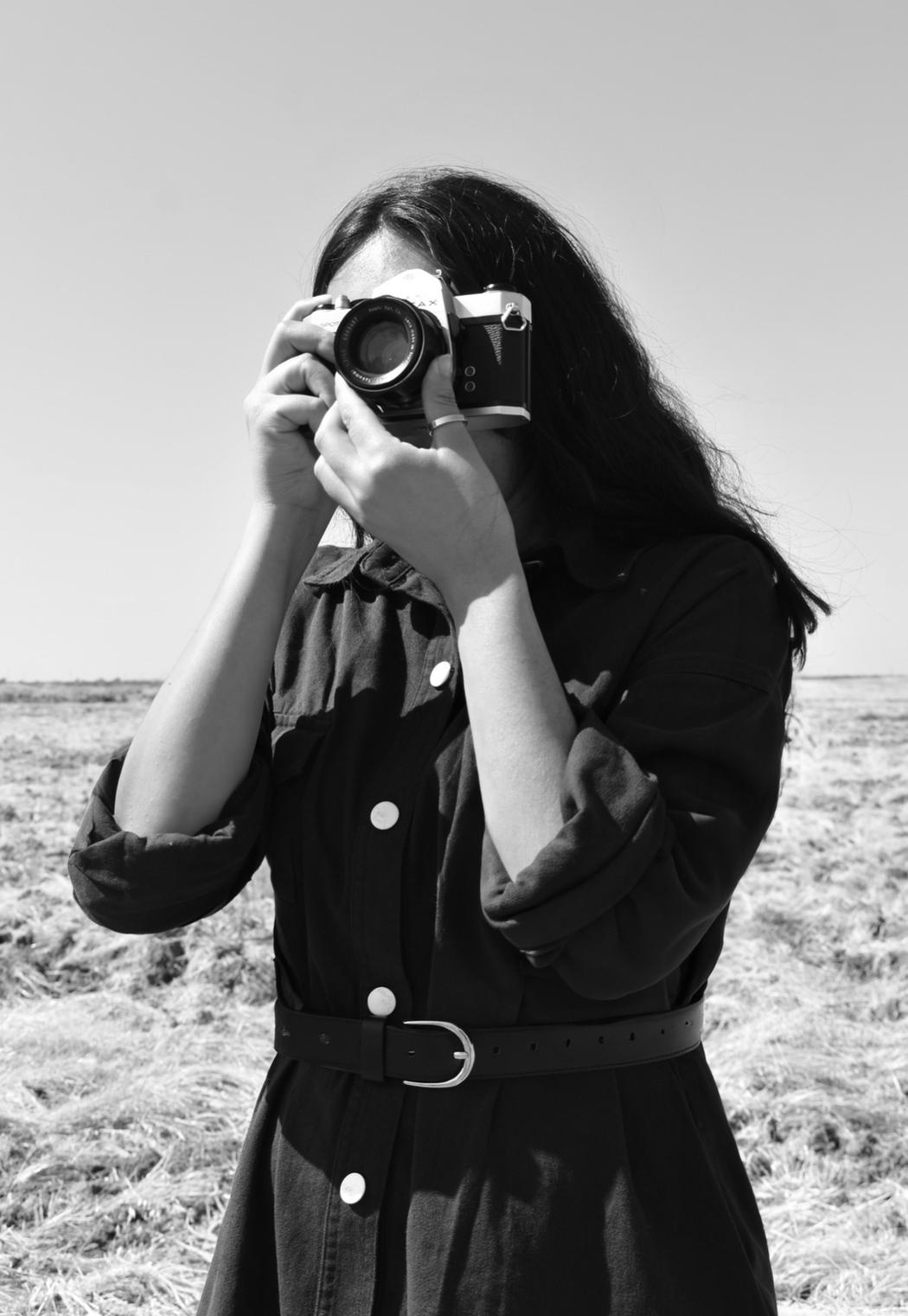
Leave a Reply